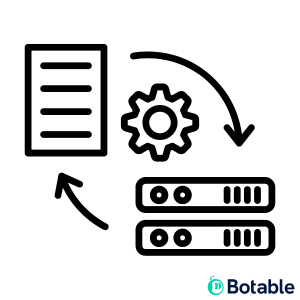Design Outputs
The final, approved blueprints and instructions that tell the factory exactly how to build the product.
Design Output is one of the mandatory elements of Design Controls under the U.S. FDA's Quality System Regulation (QSR) for medical device manufacturers, specifically outlined in 21 CFR 820.30(d).
Here is a detailed breakdown of the definition, requirements, and principles of Design Output:
Definition of Design Outputs (21 CFR 820.30(d))
Design Output is defined as the results of a design effort at each design phase and at the end of the total design effort.
The total finished design output consists of the device, its packaging and labeling, and the Device Master Record (DMR).
Core Requirements and Principles
Manufacturers must establish and maintain procedures for defining and documenting design output. This is necessary to ensure the design is ready for production and complies with initial requirements.
The procedures governing design output must ensure the following are met:
1. Conformance to Design Input (The "How")
The design output must be defined and documented in terms that allow an adequate evaluation of conformance to design input requirements.
- This relationship is fundamentally checked during Design Verification, which confirms that the design output meets the design input requirements. This answers the question: "I made the product correctly".
- If design controls were used to assess a change, the notice of change must include a statement that the verification and validation testing, as appropriate, demonstrated that the design outputs met the design input requirements.
- The output from the Design Stage must be reviewed, and all the design output documentation must be approved by the end of the Design Output Stage.
2. Required Documentation and Specifications
The output is the definitive specification for the device and must include certain elements:
- Acceptance Criteria: Design output procedures must contain or make reference to acceptance criteria. These are specific targets or requirements demanded by the customer or regulatory agencies that must be clearly stated so they can be checked during review.
- Essential Functioning Identification: Procedures shall ensure that those design outputs that are essential for the proper functioning of the device are identified.
- Basis for DMR: The finished design output is the basis for the Device Master Record (DMR). The DMR contains the procedures and specifications for a finished device, including device specifications, production process specifications, quality assurance procedures, packaging and labeling specifications, and installation/maintenance/servicing procedures.
3. Review and Approval
Design output must be documented, reviewed, and approved before release.
- The approval, including the date and signature of the individual(s) approving the output, shall be documented.
- The results of the Design Review, including identification of the design, the date, and the individual(s) performing the review, must be documented in the Design History File (DHF).
4. Safety Considerations
The Design Output Stage has specific requirements related to safety:
- The design output must identify and highlight safety issues for the design.
- ISO 9001 demands that the Design Output Stage identify safety-related issues in all aspects of the product's life cycle. This includes identifying the characteristics of the products and services that are essential for their intended purpose and their safe and proper provision.
Design Output in Practice (The Documentation Package)
The Design Output Stage is where the documentation package for a product’s design is prepared. This documentation package often includes:
- A set of two-dimensional drawings (which form the Released Drawing Format).
- Bills of materials (BOMs).
- Material specifications.
- Technical manuals and installation instructions.
- Production/Manufacturing instructions and production process specifications.
- Acceptance criteria report.
- Packaging and labeling specifications.
The creation and control of this output documentation should be managed through a system of Product Data Standards. The approval process ensures that this documentation is accurate before the design is formally transferred to manufacturing (Design Transfer).
Ready to see what Botable can do for you?
Book your demo now to see how Botable can transform your workplace.
Identify your unique challenges
Flexible pricing options
Easy integrations
Step-by-step implementation plan
Customize Botable for your workflow
Book a demo
.webp)







